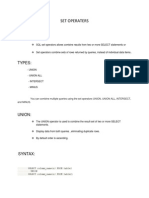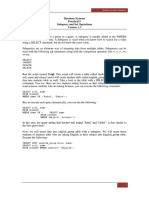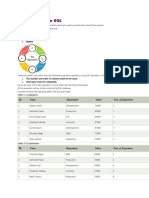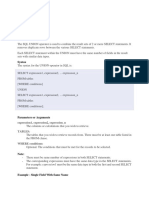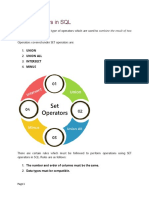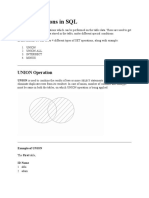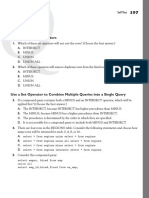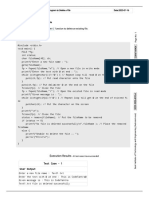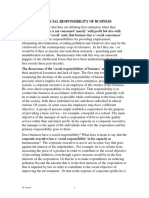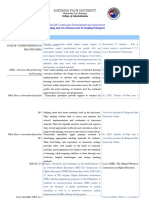0% found this document useful (0 votes)
4 views21 pagesSet Operators
Set operators in Oracle 11g, including UNION, UNION ALL, INTERSECT, and MINUS, are used to combine results from multiple SELECT statements. UNION removes duplicates while UNION ALL retains them; INTERSECT finds common records, and MINUS excludes results from the second query. Key points include the need for compatible data types, the requirement for the same number of columns, and performance considerations, with UNION ALL generally being more efficient.
Uploaded by
varshita chellaboyinaCopyright
© © All Rights Reserved
We take content rights seriously. If you suspect this is your content, claim it here.
Available Formats
Download as PPTX, PDF, TXT or read online on Scribd
0% found this document useful (0 votes)
4 views21 pagesSet Operators
Set operators in Oracle 11g, including UNION, UNION ALL, INTERSECT, and MINUS, are used to combine results from multiple SELECT statements. UNION removes duplicates while UNION ALL retains them; INTERSECT finds common records, and MINUS excludes results from the second query. Key points include the need for compatible data types, the requirement for the same number of columns, and performance considerations, with UNION ALL generally being more efficient.
Uploaded by
varshita chellaboyinaCopyright
© © All Rights Reserved
We take content rights seriously. If you suspect this is your content, claim it here.
Available Formats
Download as PPTX, PDF, TXT or read online on Scribd
/ 21








